Reading time is around minutes.
The Layout -
The layout of any motherboard is important. Even simple mistakes in component placement or the signal traces can cause major issued in performance and stability. With the ATX form factor we find that this is even truer; the devices we drop onto them demand more and cleaner power while the signal speeds push faster and faster. The Asus P8Z77-V Deluxe is a full ATX board (like many in this price range). Asus has done a few new things with their design though. They have adjusted the tracing layout to prepare for future RAM and CPU speeds. However, this new layout can also be used by existing memory. If you are looking into getting some 2400MHz memory you will get better stability (and possibly better performance) running it on the new trace layout.

Taking a look at the upper left hand section of the board we find the typical ATX layout. There are four memory slots for up to 32GB of memory (with 8GB DIMMs). The RAM support is up to 2800MHz (with an overclock). Both Ivy Bridge and the Z77 have native support for DDR3 1600, but unfortunately there are no modules out right now that have native support for 1600MHz. That means that there are no memory modules with an SPD that identifies the base operating speed and timings at 1600MHz. There will be modules out soon, but they have not hit the market just yet.
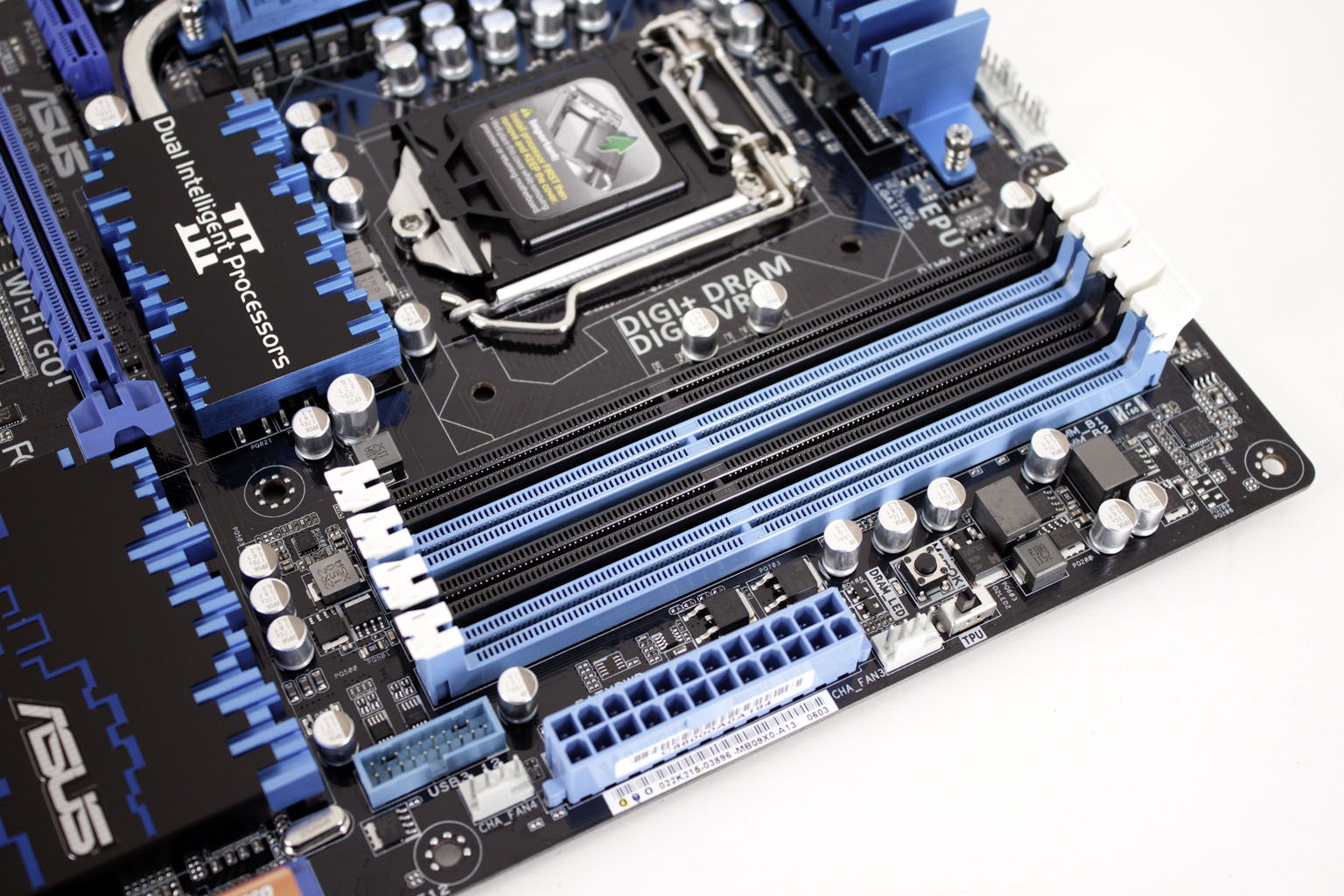
Also in the area we find a switch to enable or disable the TPU, the MemOK! Button, a USB 3.0 header and two 4-pin PWM fan headers. Moving around the board we find a couple of other items like dual fan headers for CPU cooling and a fairly beefy heatsink on the voltage regulation circuits. Asus has also left a good amount of room for the 8-pin Aux ATX power connector, although we still highly recommend using an adapter.
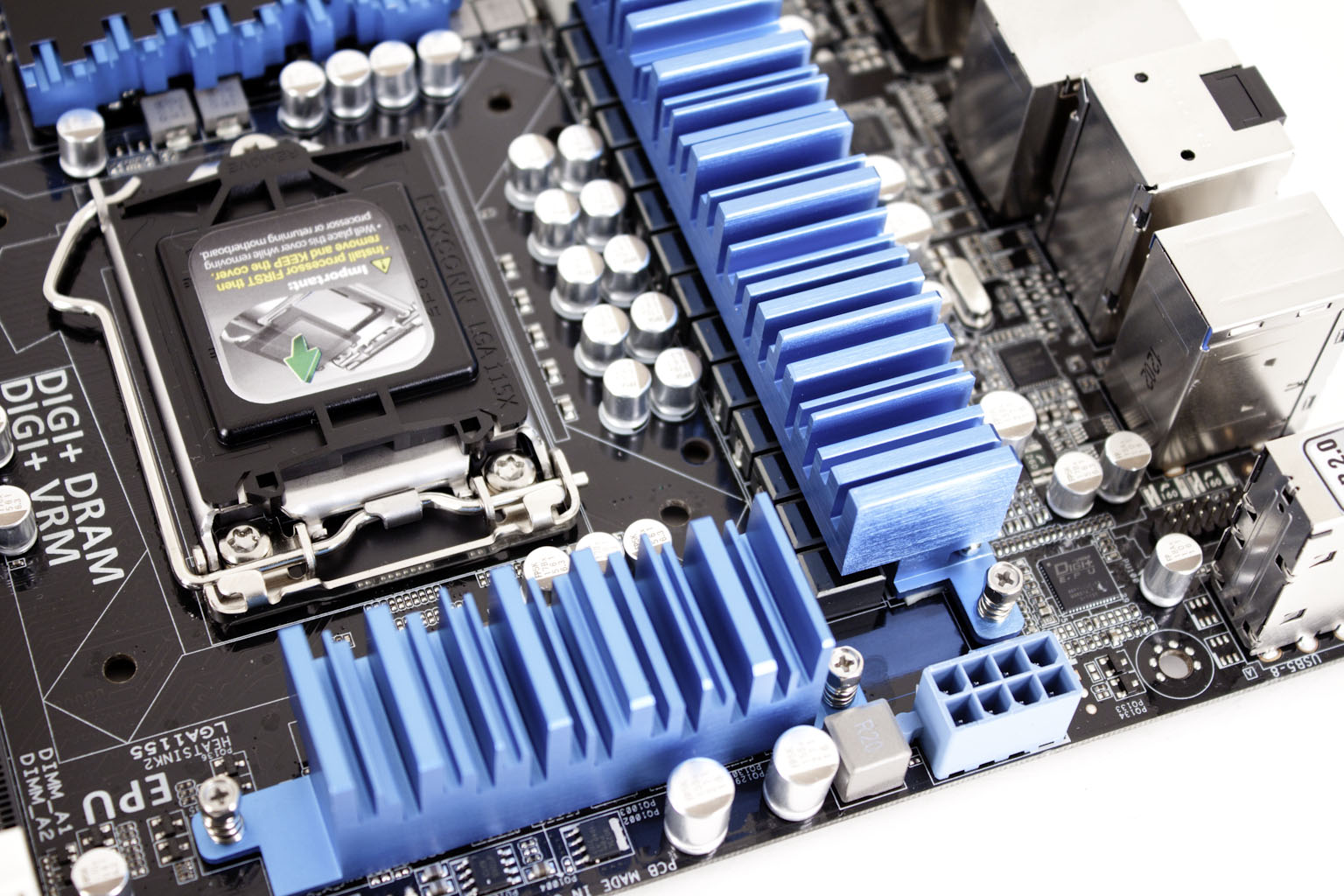
Looking at the lower half of the P8Z77-V deluxe we find a cluster of PCie slots. There are four x1 slots and three x16 mechanical. Of those three mechanical slots only one is x16 electrical and that is the top slot. The others are x8 and will still manage to give you good speed for SLI or Crossfire, just do not expect them to operate at more than x8.
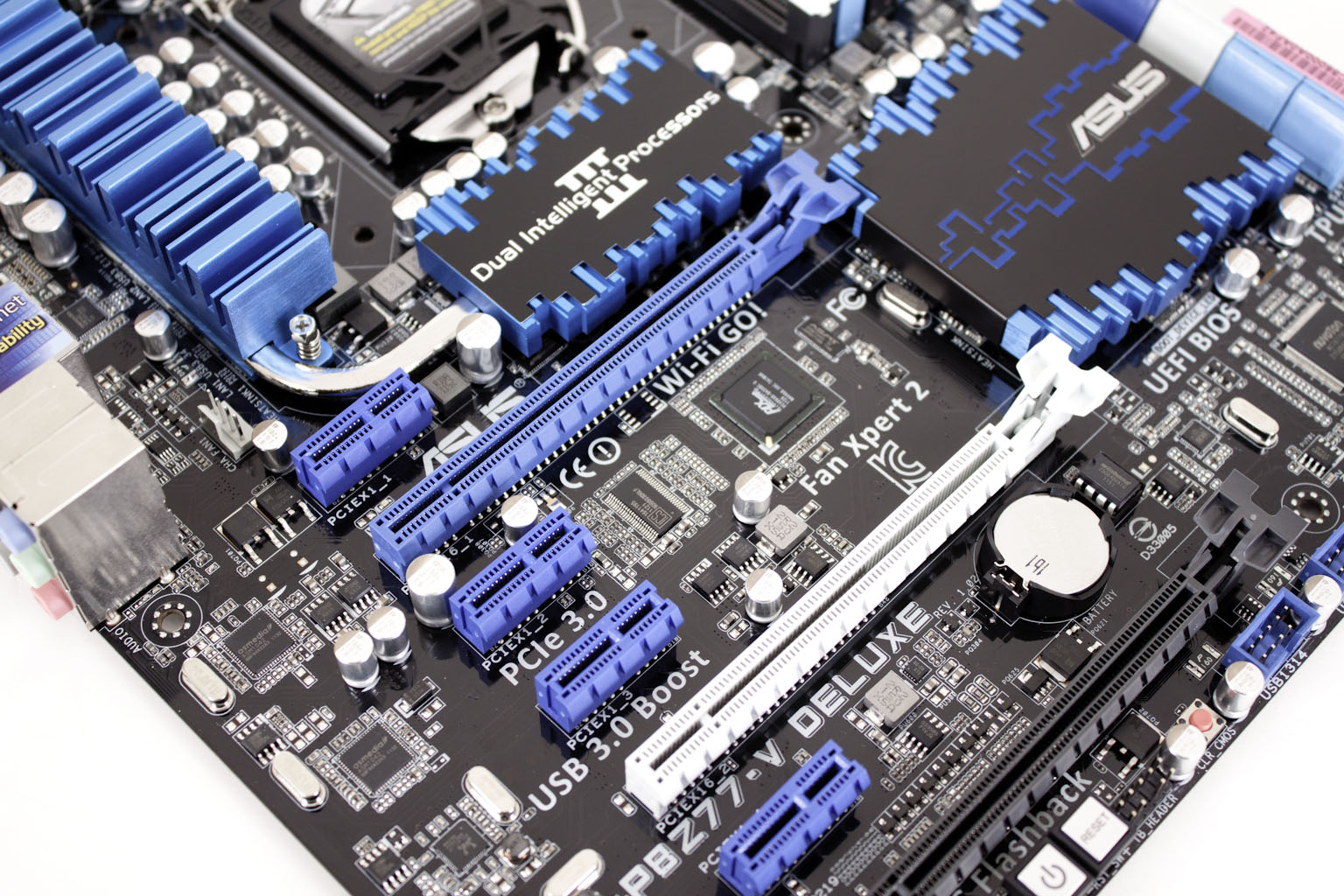 |
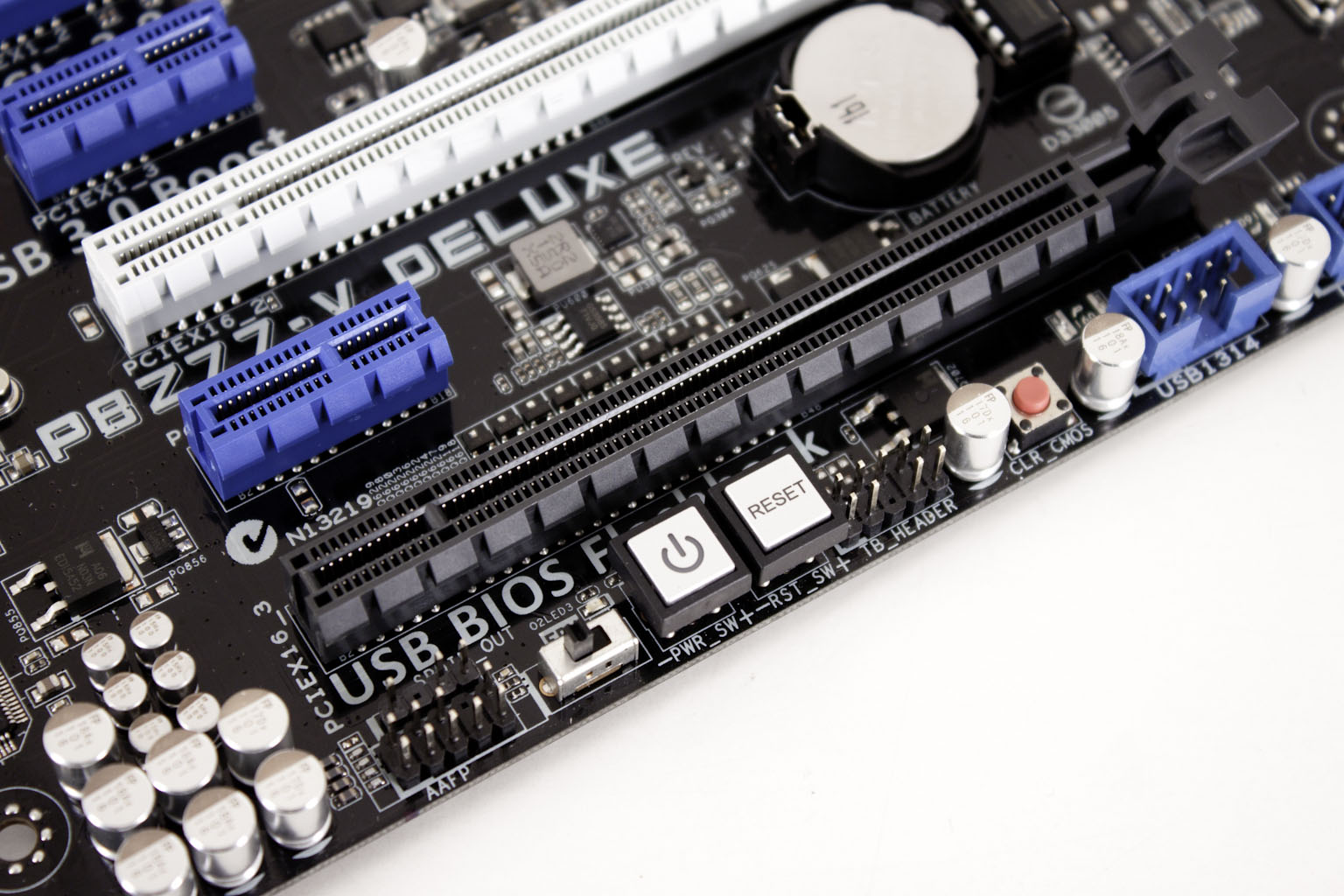 |
Along the bottom of the board we find some USB 2.0 headers, a switch to turn the EPU on or off, a clear CMOS button and some nice board mounted power and reset controls. For storage Asus is giving you the full gamut here. You get four SATA 2.0 ports from the Z77 PCH along with four SATA 3.0 ports, two are from the Z77 PCH and two are from a Mervell 9128 SATA 3.0 controller. There is an additional controller here, an ASMedia, but that is only for the back eSATA 3.0 ports. The two dark blue ports support SSD caching which lets you take a SATA 3.0 SSD and use it as cache for a traditional HDD to increase performance.
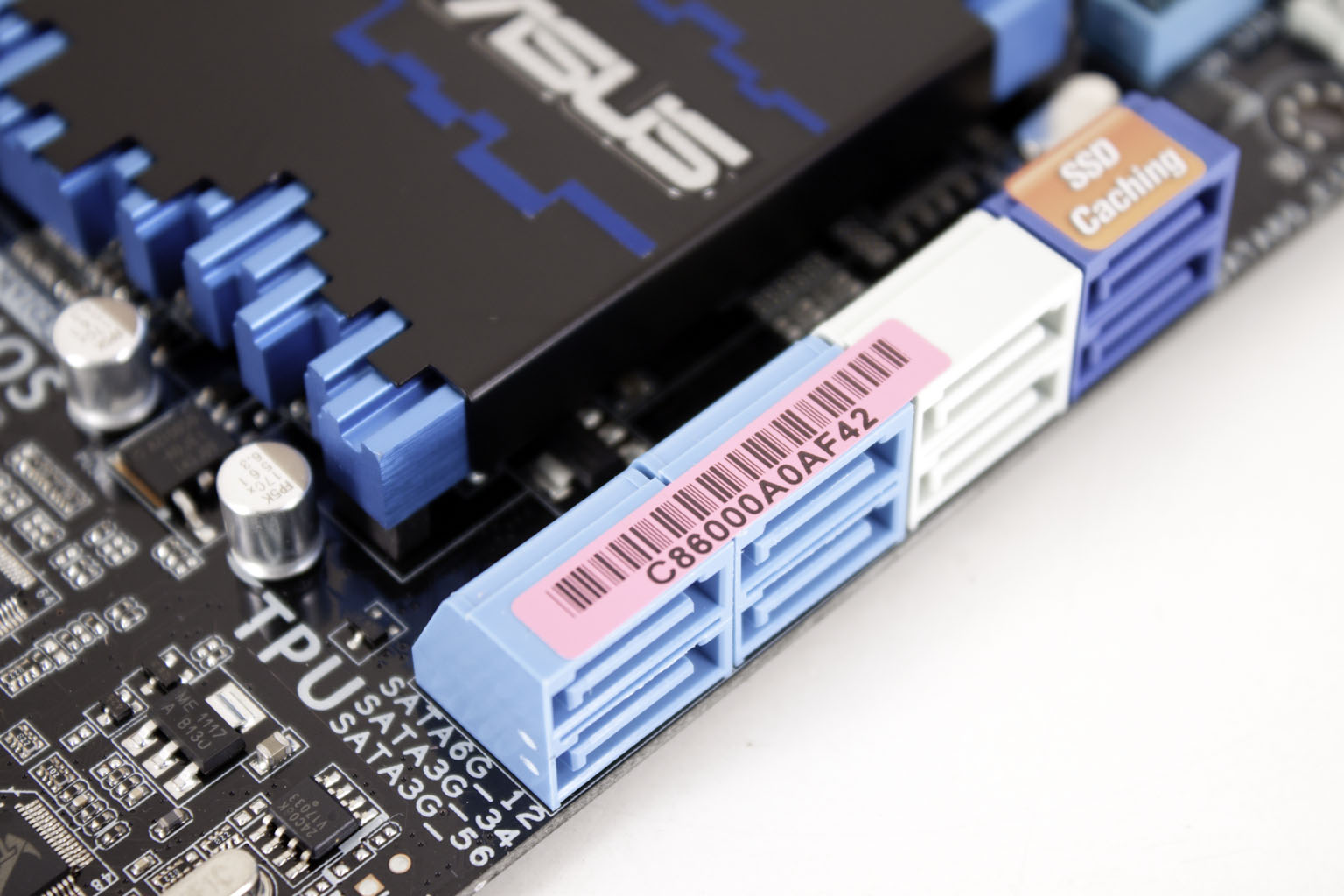
Our last stop (well sort of) on the tour around the board is a look at the I/O ports. You get six USB 3.0 ports (thanks to multiple USB 3.0 controllers (on the Intel PCH and from ASMeida) combined with VIA USB 3.0 hub chips on the board. Like the P8Z77-V you have a limited number of USB 2.0 ports and they are identified as being for your mouse and keyboard. For video out you only have HDMI and Displayport. The I/O cluster is rounded out by two eSATA 3.0 ports, two LAN ports (one Intel and the other Realtek) and the audio out ports for the Realtek ALC898 audio CODEC.

You might also notice a small series of pins between the USB 2.0 ports and the first USB 3.0 ports. This is for the WiFi Go/Bluetooth module. We will be covering that in more detail in the features section and also during the performance half of the review.
